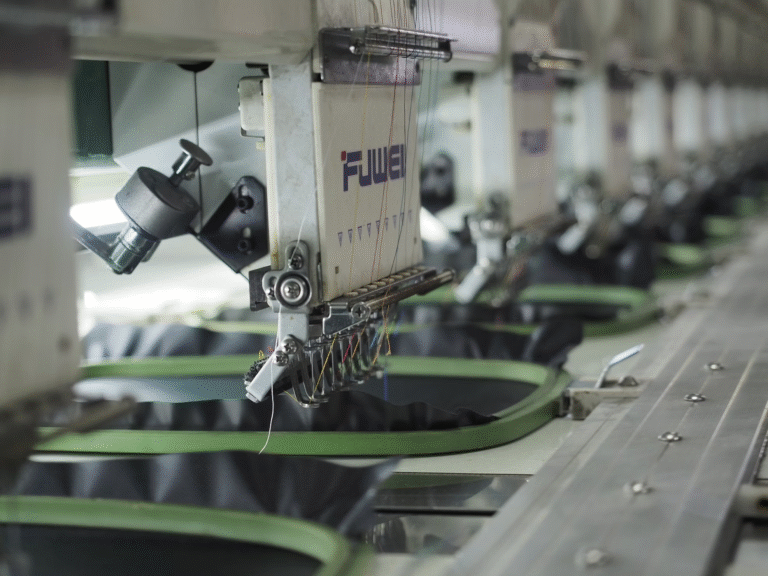Have you ever shopped online and found that the size you normally buy doesn’t fit you? Most customers will come up with this conundrum at some point, especially since different cultures, norms, and audiences vastly change size labeling. As a clothing brand, it’s your responsibility to make shopping as easy as possible for your customers–and that includes knowing how to make a size chart. An actual, detailed, proper one.
Easy, right? Probably not as easy as you think. While detailed size charts are one of the hallmarks of a professional online brand, there are so many things you have to measure to make one worthwhile. If you’re making clothes for women, you have to consider bust sizes, hems, shoulder length, and vertical height. Men will also come with different proportions, which makes creating unisex clothing somewhat more challenging.
Worse yet, if you’re making multiple clothing lines, you have to decide on how to make a size chart for all your clothing lines. Most brands have their own internal size charts that they don’t share for business reasons, which makes trying to find a ‘universal standard’ difficult.
How to Make a Size Chart
So where should you start? Let’s take a look at some first steps to consider:
Think about who you’re selling to

While it may be tempting to prepare for a wide range of customers, body sizes all over the world have a dramatic variety. Inevitably, some of your items will sell more than others, and preparing too much variety will lead to some items rotting in your inventory.
Instead of potentially wasting resources, focus on your primary demographic’s sizes. For example: Southeast Asian men have different builds and measurements than European men. You can check out common external size charts from more popular clothing brands, like Nike, to get an idea of how to make a size chart and how those changes will work in your own clothing line.
If you’re expanding your brand internationally, remember to change your size charts too. You can often work with local manufacturers to arrange different proportions according to the population. Alternatively, you can work with experienced merchandising companies like Shirtual who are already familiar with international manufacturers and can adjust to your needs.
Know the common measurements

If you’ve established your target market, you should also be aware of the measurements you need to think about before learning how to make a size chart. This is also important for the tech pack stage of your design. Here are a few common measurements to consider for shirts:
- Full Length: The vertical measurement of the whole shirt.
- Chest Half Width: The width of your top’s front.
- Waist Half Width: The width of your waist’s front.
- Sleeve Length: How long your sleeves are.
- Armhole Width: How big the hole of the sleeve will be.
- Shoulder Width: Measuring the entire shoulder area.
- Collar Sizes: This normally revolves around collar width (how wide your collar is) and neckline drops (how low the neckline goes down).
- Shoulder Length: The measurement of just one shoulder half.
Remember these measurements, as they’re important to your final design and requests.
Decide on a consistent grading system
Grading is similar to scaling a picture in design. You’re adjusting your measurements for different sizes, but all measurements have to scale at similar ratios to maintain a balanced look in each product.
That means you just have to make all the measurements from before bigger, right? Well, hold on, it’s not that easy. While some measurements clearly need to be adjusted, they may not be adjusted in the same ways. For example, a bigger person and a smaller person will likely have different widths (i.e. one has a broader chest than the other), but they both may have similar heights or lengths. These are all important things to consider when learning how to make a size chart.
This also doesn’t take into account how patterns will look at different scales, or whether any prints or accessories will have to be adjusted in different places. When deciding on your grading system, you generally want to think about:
- Your Points of Measurements: These are the common measurements we talked about in point 2. You keep all these measurements in mind as a guideline for how they’ll be scaled.
- Grade Rules: These are the differences between each size, usually decided by increments of inches. They vary based on what point of measurement you’re scaling off of. For example, chest width will typically be increased or decreased by 2” increments, while arm holes will only have to be adjusted by half an inch increments.
Find models to test your final sizes

While your measurements will theoretically work after some consideration, reality can often be very different from the planning stage. Fabric, patterns, and anatomy can greatly affect the final look of a sized-up or down product in an actual physical form.
In this case, you’ll want to find a few good models from the sizes you’re measuring to test out their looks. This can be a friend or a professional fitting model, but they have to be representative of your core target market.
When assessing your outfit sizes on a model, make sure to consider:
- Do the clothes fit well?
- Is any area of the fabric stretched or strained?
- Does the pattern look consistent between different sizes?
- Is the placement of the accessories appropriate between different sizes?
- Is there any other form of discomfort? This doesn’t need to be in size specifically, as using a model is a great way to find out if the materials are comfortable or not.
If you’ve reached this stage with no issues, you’ve finally got a good sizing chart! This can be used in your tech pack to send to the manufacturers and arrange all the details of your final products.
Throughout the process, you can probably tell there’s a lot of back-and-forth when deciding on your proper sizes. A brand owner starting out might be confused about where to begin or how to transform their initial designs into the real deal.
Shirtual’s one-stop solution in merchandising lets you focus on your branding and marketing while we deal with the roadmap, planning, and production phases of your final products. Focus on growing your brand–let us take care of the rest.






